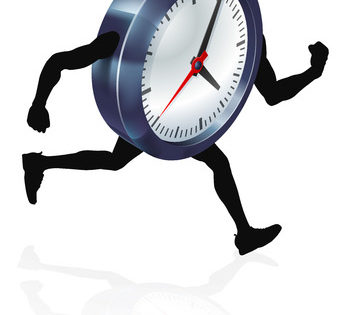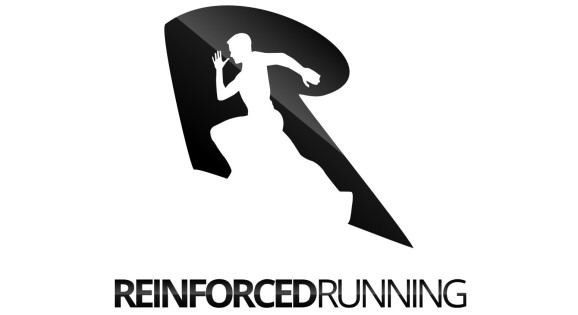Run a Faster PR on Your Current Schedule
“So, how do I run faster?” I was asked at a local 5k.
“I want to hit my 5k PR in the next six months, and I also want to do a tri, but my busy season at works is coming up.”
Does this sound familiar?
Most runner’s I know are busy people. They are driven, have full-time jobs, and care for families. They do all of the right things to the best of their ability.
When it comes to running, they want to put their best effort and get faster.
So, they follow a free running plan online, but life is hard and gets in the way.
- A workout get’s missed.
- Long runs get cut short.
- Stretching can always wait until tomorrow.
On top of that running is not always the primary goal.
Garrett is a friend who is a fitness fanatic. He has strength goals and is committed. He is jacked and strong, but now wants to faster. That’s when he came to me.
In Garrett’s case, he was stretched thin. His workouts schedule was packed!
- Heavy days.
- Intensity days.
- Volume days.
To add in 3-4 days of distance running would not help his goals or fit his schedule.
So, we made a game plan to run a fast 5k. Within eight weeks Garrett had improved his 5k by 1:30 mins without running extra volume.
So, here is how Garrett improved and ran faster and how you can too.
(Click here to get a free strength training program to get strong like Garrett)
Interval Training
What is interval training?
Interval training is a fast and challenging rep that will last 400m-1600m
 The pace is faster than your 5k and can put you in the “pain cave” relatively quick. These workouts are not glamorous, but they will help your speed and endurance.
The pace is faster than your 5k and can put you in the “pain cave” relatively quick. These workouts are not glamorous, but they will help your speed and endurance.
So, if you are up for the test and want to get faster here is how:
Five steps to smash your intervals.
1) Find your baseline:
First, determine your current fitness level. Your baseline test is a time trial or race. The distance should be 3 miles to 5 miles and run HARD. To get “faster” you need to know how fast you are right now.
2) Run fast and recover.
Now, you have a baseline for your fitness you can dial in your pace during the workouts. Use a fitness calculator like Runsmart.com to determine the pace for your intervals.
For example, if you run a 20 min 5k your race pace is 6:27 and your interval pace would them be 6:19.
Make sure you recover from your previous rep. The best way to get fast is to run fast, so recovery is essential to hit your target pace in successive reps.
Rest 2:30 – 3 mins between each interval to make sure you are ready to rock. Use the internal rest as complete rest (walk slowly or jog lightly).
3) Do not be a practice hero.

Running too fast during your intervals will change the response of the workout. You will need more rest or may miss your target numbers because you are fatigued. if you are not running consistently. The reps are hard, but they are not a 100% sprint.
You will get faster, but only if you hit your pace targets. From the example above if you are aiming for 800’s @ 6:19 pace your goal time is 3:10. The fastest your should run is 3:08 and the slowest is 3:12.
*** I cannot stress this point enough. Running slower to get faster can seem counterintuitive. But, it’s not as simple as going out the door and crushing every run. Hit your pace. Your fitness will improve, and you will eventually run faster!!!****
4) Use progression
Progression is a fancy way of saying “make the workouts harder.”
I know I just went on and on about how faster is not better, but we know that faster IS better when it comes to performance. Just be smart.
Enter progressions
There are several ways to add progression to your workouts. Each week you can:
- Add volume.
- Increase intensity.
- Reduce rest.
For these workouts, in particular, I recommend you add progression in that exact order.
Added Voulme
Weeks 1-4
- 3 x 800 @ 6:19 pace with 3:00 min rest
- 2 x 1000 & 1 x 800 @ 6:19 pace with 3:00 min rest
- 3 x 1000 @ 6:19 pace with 3:00 min rest
- 1 x 1200 & 2 x 1000 @ 6:19 pace with 3:00 min rest
Added Intensity
Weeks 5-8
- 3 x 800 @ 6:17 pace with 3:00 min rest
- 3 x 800 @ 6:15 pace with 3:00 min rest
- 3 x 800 @ 6:13 pace with 3:00 min rest
- 3 x 800 @ 6:11 pace with 3:00 min rest
Reduce Rest
Weeks 9-12
- 3 x 800 @ 6:11 with 3:00 with min rest
- 3 x 800 @ 6:11 with 2:45 with min rest
- 2 x 1000 1 x 800 @ 6:11 with 2:45 min rest
- 2 x 100 1 x 800 @ 6:11 with 2:30 min rest
Each progression will give you a more significant challenge, and you will experience training adaptation.
I made a free “Interval Progression Workout Sheet” so, you can add intervals to your training plan today. Download here.
5) Recheck your fitness
Every 3-4 weeks run another baseline test/race. I recommend keeping your baseline test/ race distance in the 5k-5mile distance. You will be able to recover and bounce back from training easier.
If your fitness test has improved, then systematically progress the workouts. Use a pace calculator (Run Smart Calculator) to find your new paces.
Change Gears
After a complete 4-12 week cycle of interval training, you will then be able to reevaluate your current fitness and how you respond to intervals.
Intervals workout will make you fast, but there are several other ways to improve your running fitness. Each runner will respond differently to stimulus.
So, take time to work a different routine into your training.
Such as:
- Tempo
- Threshold
- Top end speed intervals
Learn more about training and progression here.
If you are a determined person who has a full plate, then add these workouts to your schedule once a week. Download the free PDF version of a 12-week program to your running gainz!


